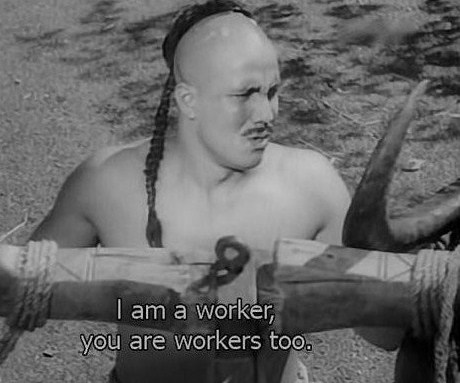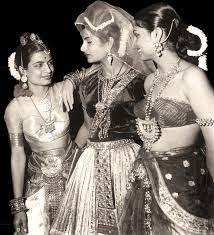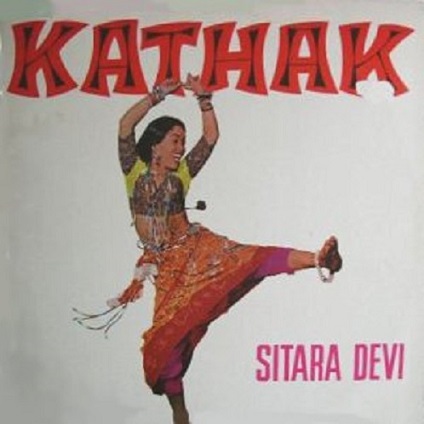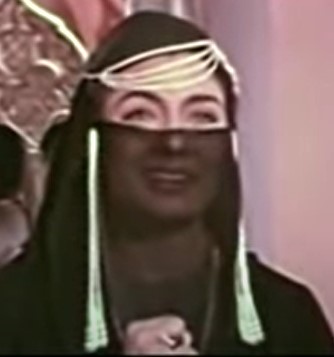I usually don’t expose my ultra-leftist reading habits and interests on my “Indian film blog” (well, at least not too often anyway), but tonight I just had to share some passages that I saw in an article in Faridabad Workers Newspaper regarding the sinister social origins and content of the nose ring. Now, I have great respect for the people who do this blog/paper and I think that some things they say should be taken very seriously, but for some reason I just found this stuff about the nose ring to be very amusing. (Which isn’t to say that it isn’t true, of course…) But I’ll let the readers of this blog judge for themselves, as I’ve decided to post the passage here – with a few illustrations added…
*Although the control of humans is crossing the sky, ‘nathna’ (nose ring) is not in currency today. Nathna means to control. Making an hole in an ox’s nose and taking a rope through it was called natha. The actual rope in the ox’s nose was called ‘nath.’ In the stages of gathering and hunting, our ancestors’ behavior was chiefly that of being a part of nature. Controlling animals through nose-rings began changing many things.
-Putting nose-rings/controlling the ox, exploitation of the cow… This did not stop at animals. The owners of animals became the lords of slaves.
And husband became the synonym of lord and nath…
-In nature, such related capacity of a woman is equal to that of many men. One man cannot sexually satisfy one woman…Therefore, ‘nathna’, putting nose ring.
Continuous conflict within man and woman. There are no limits to doubt-suspicion-cruelty.
Anecdotes regarding a woman’s character. Today DNA tests exist to verify paternity…
It has been a synchronicity of weapon and text that nose-rings became the ornament of strength or power of market.
It is the increasing weakness of man that is forcing woman also to become a wage worker. One politics of identity that places curtains on this reality presents it as woman’s empowerment…Becoming of woman as wage-worker is seen-shown as a step on the path of emancipation.
Market-Money are making the individual the unit of a social construct…







Interesting post, and share your amusement. I shall also look out for the Faridabad Workers Newspaper.
I have always liked that last song; there is traditional dance “verse” in punjabi which is similiar, but I had never seen the picturisation. Am still sitting here reeling from the shock!
Btw, laung is a diamond nose stud, laung also being the word for the spice “clove”, so you can see the connection there.
Bawa, thank you for the quick response! (I think you even posted before I decided on the final order of my “illustrations.”) I am also glad that you’ll look out for the Faridabad Workers Newspaper (it would be interesting to hear your thoughts sometime about other things there). And that is interesting re. the double meaning of “laung” as diamond nose stud and clove – that does kind of make the video more pertinent to the article than I even realized. (I had heard that “Mera Laung Gawacha” meant, at least approximately, “I lost my nose ring”; that’s about it…) The video itself is quite something, isn’t it? :)
Gobsmacked! And for once, the word truly applies. This song shall never be the same again for me :)
Have bookmarked the Faridabad page; shall let you know when I have time to have a good look at it.
Somehow, from the way the article was written, I thought the Faridabad Mazdoor Samachar was something that had been written long back – perhaps in the early 1900’s, and which someone had digitised only recently. It took a look at their ‘About Us’ page to realise that this is all pretty contemporary. Interesting take on the concept of the nose ring, even if badly written…. I was reminded of how, in Kumaon (also perhaps in Garhwal, though I’m not sure) a woman’s husband’s status would be gauged by the size of her nose ring. Some women, wives of the more wealthy and powerful, would end up wearing nose rings so heavy and huge that they’d cover much of the woman’s face, and sometimes drag her nose down till the nostril tore.
Dustedoff :) , I didn’t get that impression about the age of the article; I just assumed that the awkwardness in the writing came from someone not having English as a first language, or else from a not-quite-adequate attempt to translate from Hindi. (It says in the “About” section that this is from a paper written in Hindi. So…)
In any event, that is interesting what you are saying about the wives of the wealthy and powerful wearing the biggest nose rings. In American culture, I bet there are very few people who are even aware of such association. Here, at least outside of Indian/Pakistani/Bangla neighborhoods, a young woman wearing a giant nose ring might actually be looked upon as being more rebellious and anti-establishment than others. Though piercings have become much more of a mainstream fad with kids these days, I still imagine that an American girl wearing a giant nose ring that pulls down her nostril and tears it might automatically be considered very “punk rock”; people might even assume she’s an anarchist. (Whereas in India, the anarchist wouldn’t be wearing the nose ring; she’d more likely be the one to write an article criticizing it. :) )
——————
P.S. If anyone saw a different version of this comment, it’s because I revised/edited a few times… For some reason, I’ve found it difficult to say exactly what I want to say in comments on my own post here (no pun on “post” intended)…
Wow, never thought of it this way.
Very revealing!
I only knew the sexual denotations of the nath. nicely composed text!
Thanks, Harvey. Glad you liked it. Awkwardness of grammar or syntax notwithstanding, I do think that the text in these articles is, as you say, “nicely composed,” at least in terms of the way ideas are connected and associations made
@Richard, it IS odd, isn’t it, how the same thing can have two completely different connotations for people from different backgrounds? I have seen – mostly in media, etc – punks in the West wearing nose rings (and here in India too a small ‘stud’ in the nose can mean you’re very ‘in’), but otherwise generally in India it is the more old-fashioned who’d actually wear traditional nose rings. A Kumaoni friend of mine, when she was getting married, had a huge fight with her mother because the mother wanted my pal to get her nose pierced and wear a nose ring, but my friend refused. They eventually compromised – she wore a nose ring for her wedding, but a fake one – it sort of clipped onto her nostril!
I have always thought the word laung originated from the fact that nose studs do look like a laung. Another word for it is ‘keel’ which means ‘a nail’ , there again the shape does resemble a keel.
Dustedoff, yes, it is funny… Actually, a clip-on would be considered a little less “outrageous” in some circles here.
Pacifist, thank you for nailing down that etymology so precisely.
Speaking of nose ring, I am used to seeing in Indian noses
so when it became fashionable in West.
I thought it would go away but then I noticed
that girls who had plastic surgery were more likely to
have one. So in a way it same way ear rings are used
by plastic surgery to hide their surgery and end up being
fashion statement. In the end it is just b.s. like the newspaper article.
Main point is the Life’s main weapon is deception.
Sometimes the leftist are too stupid to see their nose.
My grandmother used to tall how boys ears were pierced and
tatoed on the hand to prevent them from muslims from kidnapping them.
Rd, alas, I can’t make any sense out of most of what you just wrote, but if others do, good for them. I’ll just leave it there with no further comment, thanks.